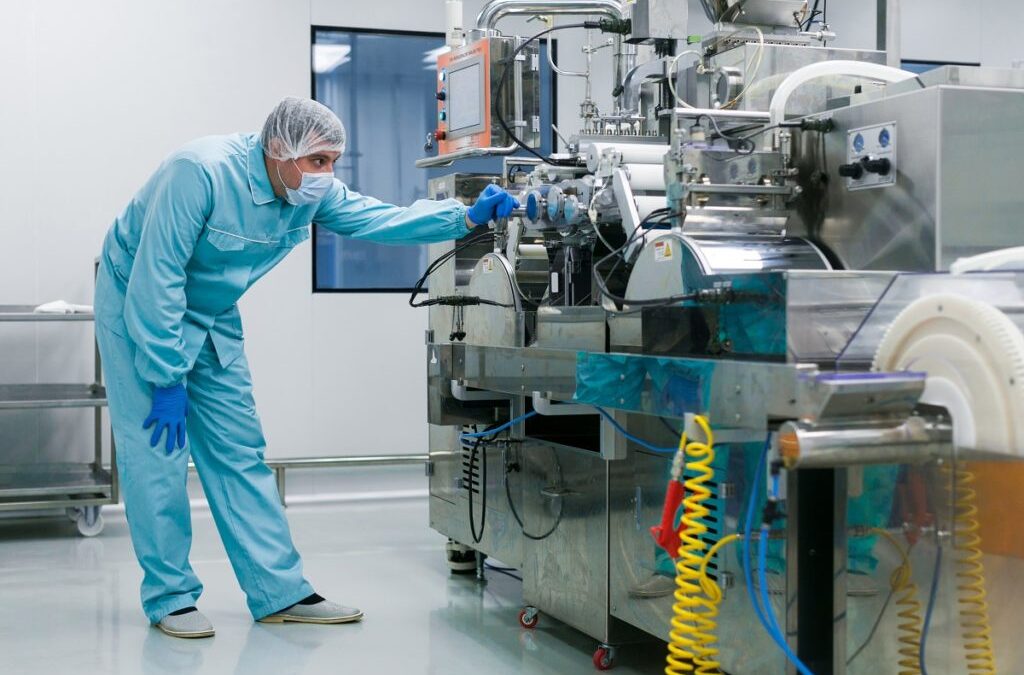
by mark advisor | Jul 3, 2025 | Blog
In today’s fast-paced world, the convenience of smart technology has become an integral part of our daily lives. With the advent of the smart home maintenance app features, managing household tasks has never been easier. These apps not only simplify home maintenance but also enhance the overall living experience. Whether you are an entrepreneur, a busy professional, or a homemaker, understanding the features of these apps can greatly benefit you.
The primary focus of smart home maintenance app features is to streamline home management processes. By leveraging these features, users can effectively monitor and control various aspects of their home environment. This article will delve into the essential features that make these apps indispensable in modern homes.
Key Features of Smart Home Maintenance Apps
1. Predictive Maintenance
One of the standout features is predictive maintenance. This feature uses data-driven insights to predict when home appliances might need attention, thus preventing unexpected breakdowns. By analyzing usage patterns and environmental conditions, the app can alert homeowners to potential issues before they become major problems. For more insights on predictive maintenance, you can visit this article.
2. Scheduled Maintenance
Scheduled maintenance is another crucial feature. This feature allows homeowners to set reminders for regular maintenance tasks, such as changing air filters or checking smoke detectors. By maintaining a consistent schedule, homeowners can ensure that their home remains in peak condition.
3. Remote Monitoring and Control
With remote monitoring and control, homeowners can manage their home systems from anywhere. Whether it’s adjusting the thermostat, turning off lights, or securing doors, these apps provide unparalleled convenience and peace of mind. Learn more about the advantages of remote control in smart homes at this link.
4. Energy Management
Energy management features allow users to track and optimize their energy usage. By providing insights into consumption patterns, these apps help homeowners reduce their carbon footprint and save on utility bills. For detailed information on energy management, check this resource.
5. Customizable Alerts and Notifications
Customizable alerts and notifications ensure that homeowners are always in the loop. Whether it’s an alert about a potential issue or a reminder for a scheduled task, these notifications help users stay on top of their home maintenance duties.
The Benefits of Using Smart Home Maintenance Apps
Embracing the smart home maintenance app features offers numerous benefits. From enhanced convenience to improved efficiency, these apps are designed to make life easier. They not only help in maintaining a well-functioning home but also contribute to a more sustainable living environment.
For instance, by utilizing predictive maintenance features, homeowners can significantly reduce the likelihood of appliance breakdowns. This not only saves money on repairs but also extends the lifespan of home appliances. For more about the benefits of predictive maintenance, visit this page.
Improved Home Safety
Smart home maintenance apps enhance home safety by allowing users to monitor security systems in real-time. From surveillance cameras to alarm systems, these apps provide a comprehensive view of home security, ensuring peace of mind for homeowners.
Cost Savings
By optimizing energy usage and preventing costly repairs, these apps lead to significant cost savings. Homeowners can make informed decisions about their energy consumption, thereby reducing their monthly expenses.
Environmental Impact
Reducing energy consumption not only saves money but also minimizes the environmental impact. By adopting smart home maintenance practices, homeowners can contribute to a more sustainable future.
Choosing the Right Smart Home Maintenance App
With numerous options available, choosing the right app can be daunting. It’s essential to consider factors such as compatibility, user-friendliness, and the range of features offered. Additionally, reading reviews and seeking recommendations can help in making an informed decision.
Compatibility with Home Systems
Ensure that the app is compatible with your existing home systems. This ensures seamless integration and optimal performance.
User-Friendliness
A user-friendly interface is crucial for a smooth user experience. The app should be easy to navigate, with clear instructions and intuitive controls.
Customer Support
Reliable customer support can be a lifesaver in case of technical issues. Opt for apps that offer responsive and helpful customer service.
Conclusion
In conclusion, smart home maintenance app features are transforming the way we manage our homes. By embracing these technological advancements, homeowners can enjoy a more convenient, efficient, and sustainable living environment. As technology continues to evolve, these apps will play an increasingly vital role in our daily lives.
FAQs
1. What are the key benefits of using smart home maintenance apps?
These apps offer enhanced convenience, improved efficiency, cost savings, and better home safety, contributing to a more sustainable living environment.
2. How do smart home maintenance apps improve home safety?
By allowing real-time monitoring of security systems, these apps provide a comprehensive view of home safety, ensuring peace of mind for homeowners.
3. What should I consider when choosing a smart home maintenance app?
Consider factors such as compatibility with existing home systems, user-friendliness, and reliable customer support to ensure a smooth experience.
This article contains affiliate links. We may earn a commission at no extra cost to you.

by mark advisor | Jul 3, 2025 | Blog
In recent years, the concept of predictive maintenance has gained significant traction across various industries. As it stands, predictive maintenance for garage doors is increasingly being recognized for its potential to optimize functionality and extend the lifespan of these essential home components.
Predictive maintenance leverages data analysis to foresee potential issues before they become significant problems. This approach not only saves time and money but also enhances safety and reliability. For garage doors, which are often used multiple times a day, implementing predictive maintenance can prevent inconvenient and costly breakdowns.
What is Predictive Maintenance?
Predictive maintenance involves using data and analytics to predict when a component will fail so that maintenance can be performed just in time to prevent the failure. This method is proactive rather than reactive, which means it can help avoid unexpected breakdowns and extend the life of equipment.
How Does It Apply to Garage Doors?
Garage doors are subject to wear and tear due to frequent use. Predictive maintenance for garage doors involves monitoring the condition of the door and its components, such as springs, cables, and openers, to predict when they might need repair or replacement. This can be achieved through the use of AI sensors that detect anomalies in the door’s operation.
Benefits of Predictive Maintenance
Implementing predictive maintenance for your garage doors offers numerous benefits:
Cost Efficiency
By predicting failures before they occur, you can schedule maintenance during regular service visits rather than dealing with emergency repairs. This proactive approach can significantly reduce maintenance costs over time.
Increased Safety
Garage doors are heavy and can cause injury if they fail. Predictive maintenance ensures that any potential issues are addressed before they become a safety hazard.
Extended Lifespan
Regular maintenance keeps garage doors in optimal condition, which can extend their lifespan. By addressing issues early, you prevent further damage that could lead to the need for a full replacement.
Implementing Predictive Maintenance
To implement predictive maintenance for garage doors, consider the following steps:
Install Smart Sensors
Smart sensors can monitor the operation of your garage door and provide data on its performance. These sensors can detect unusual vibrations, sounds, or movements that might indicate a problem.
Use a Predictive Maintenance Dashboard
Utilize a predictive maintenance dashboard to track the status of your garage doors and receive alerts when maintenance is needed. This tool can help you stay on top of any potential issues.
Regular Inspections
Conduct regular visual inspections of your garage doors to identify any visible signs of wear and tear. Look for rust, frayed cables, or misaligned tracks.
Challenges and Solutions
While predictive maintenance offers many benefits, there can be challenges in its implementation. One major challenge is the initial cost of installing smart sensors and systems. However, the long-term savings on maintenance and repairs often outweigh these initial costs.
Another challenge is the need for accurate data analysis. Partnering with a reliable provider of smart sensors for predictive maintenance can help ensure that the data collected is both accurate and actionable.
Future of Predictive Maintenance for Garage Doors
The future of predictive maintenance for garage doors looks promising. As technology evolves, we can expect even more advanced sensors and analytics tools that provide deeper insights into the condition of garage doors. These advancements will make it easier for homeowners to manage their garage door maintenance proactively.
FAQs
What is the main advantage of predictive maintenance?
The main advantage is the ability to identify and address potential issues before they lead to significant damage or failure, thus saving time and money.
How often should garage doors undergo maintenance?
It is recommended to perform maintenance on garage doors at least once a year, though predictive maintenance can help determine the exact timing based on usage and condition.
Can predictive maintenance prevent all garage door issues?
While it can significantly reduce the likelihood of unexpected failures, it cannot predict every possible issue. Regular inspections and maintenance are still necessary.
This article contains affiliate links. We may earn a commission at no extra cost to you.

by mark advisor | Jul 2, 2025 | Blog
The advent of smart technology has paved the way for innovations that were once deemed impossible. One such innovation is the concept of predictive maintenance smart fans. These advanced devices not only cool our spaces but also boast the ability to predict potential issues before they become full-blown problems. This article delves into the world of predictive maintenance, its significance, and the transformative role of smart fans.
Understanding Predictive Maintenance
Predictive maintenance refers to the proactive approach of monitoring the condition of equipment to predict when maintenance should be performed. This technique promises cost savings over routine or time-based preventive maintenance because tasks are performed only when warranted.
The Evolution of Smart Fans
Smart fans have evolved significantly over the years. Initially designed to merely cool a space, today’s smart fans come equipped with sensors and connectivity features that allow them to integrate seamlessly with smart home systems. These fans not only provide comfort but also gather data about their operational efficiency.
How Predictive Maintenance Works in Smart Fans
The integration of predictive maintenance in smart fans revolves around data collection and analysis. Sensors embedded in these fans monitor various parameters like vibration, temperature, and speed. The gathered data is then analyzed to predict potential failures, ensuring timely maintenance and reducing downtime.
Benefits of Predictive Maintenance in Smart Fans
Cost Efficiency
One of the primary benefits of predictive maintenance is cost efficiency. By addressing issues before they escalate, businesses can save on repair costs, reduce downtime, and extend the lifespan of their equipment.
Enhanced Safety
By predicting potential malfunctions, predictive maintenance smart fans contribute significantly to safety. They can alert users to potential hazards, ensuring safer environments.
Energy Efficiency
Smart fans equipped with predictive maintenance capabilities are more energy-efficient. By ensuring that the fan operates at optimal conditions, energy wastage is minimized, leading to reduced electricity bills.
Challenges in Implementing Predictive Maintenance
Initial Costs
While predictive maintenance offers numerous benefits, the initial investment can be high. The cost of smart fans with these capabilities is typically higher than traditional fans. However, the long-term savings often justify the upfront costs.
Data Management
Handling and analyzing vast amounts of data can be challenging. Businesses need to invest in robust systems that can manage and interpret this data effectively.
The Future of Predictive Maintenance in Smart Homes
The integration of predictive maintenance in smart fans is just the beginning. As technology advances, we can expect these capabilities to be integrated into a wide range of smart home devices, enhancing efficiency and safety across the board.
For a deeper understanding of predictive maintenance and its broader implications, consider visiting this external resource.
Conclusion
In conclusion, predictive maintenance smart fans represent a significant step forward in the realm of smart technology. They offer a blend of comfort, safety, and efficiency that is hard to match. As more businesses and homeowners recognize the benefits, the demand for these advanced fans is set to rise.
FAQs
What is the primary purpose of predictive maintenance?
The primary purpose is to monitor equipment condition and predict failures, ensuring timely maintenance and reducing downtime.
How do smart fans contribute to energy efficiency?
By operating optimally and minimizing energy wastage, smart fans reduce electricity consumption.
Are predictive maintenance smart fans expensive?
While the initial cost may be higher than traditional fans, the long-term savings and benefits often outweigh the initial investment.
For more insights, you can explore predictive control systems and predictive safety checks for smart home solutions.
This article contains affiliate links. We may earn a commission at no extra cost to you.

by mark advisor | Jul 1, 2025 | Blog
In today’s rapidly evolving world, the concept of smart homes is gaining momentum. One of the key advancements in this realm is the predictive maintenance dashboard for homes. This technology not only enhances the efficiency of home systems but also ensures their longevity and reduces unexpected breakdowns.
What is a Predictive Maintenance Dashboard?
A predictive maintenance dashboard is a sophisticated tool that monitors the health of home appliances and systems. By analyzing data in real-time, it can predict potential failures, allowing homeowners to address issues before they escalate. This proactive approach is a game-changer for maintaining a seamless and efficient home environment.
The Importance of Predictive Maintenance
Predictive maintenance is crucial for several reasons. Firstly, it helps in reducing unexpected repair costs. By addressing potential issues early, homeowners can avoid costly repairs. Secondly, it prolongs the life of home appliances, ensuring they operate efficiently for longer periods. Lastly, it provides peace of mind, knowing that the home systems are being monitored continuously.
How Does Predictive Maintenance Work?
Predictive maintenance relies on advanced technologies like IoT sensors and AI algorithms. These technologies collect data from various home systems and analyze them to detect patterns and anomalies. For instance, if a washing machine exhibits unusual vibrations, the dashboard can alert the homeowner, suggesting potential maintenance actions.
To delve deeper into how AI can prevent home appliance breakdowns, check out this informative article.
Benefits of a Predictive Maintenance Dashboard
The benefits of a predictive maintenance dashboard for homes are manifold. Here are some of the most significant advantages:
- Cost Savings: By predicting failures, homeowners can save on expensive repair costs. Minor issues can be fixed before they turn into major problems.
- Increased Efficiency: Appliances that are regularly maintained operate more efficiently, consuming less energy and reducing utility bills.
- Enhanced Safety: Predictive maintenance ensures that all home systems are functioning correctly, reducing the risk of accidents.
Real-Life Examples
Consider a scenario where a home’s HVAC system is equipped with predictive maintenance capabilities. The dashboard detects a decrease in efficiency and alerts the homeowner about a potential issue with the air filter. By addressing this minor issue, the homeowner avoids a complete system breakdown during peak summer months.
For more examples of predictive maintenance in action, visit this external resource.
Setting Up a Predictive Maintenance Dashboard
Setting up a predictive maintenance dashboard for homes involves a few key steps. Firstly, it’s essential to choose a reliable platform that offers comprehensive monitoring solutions. Next, integrate the dashboard with the home’s existing smart systems. Finally, ensure regular updates and maintenance of the dashboard to keep it functioning optimally.
For a detailed guide on setting up predictive maintenance for home generators, explore this resource.
Choosing the Right Dashboard
When selecting a predictive maintenance dashboard, it’s crucial to consider factors such as compatibility with existing systems, ease of use, and the range of features offered. A good dashboard should provide real-time alerts, detailed analytics, and easy integration with other smart home devices.
Future of Predictive Maintenance in Homes
The future of predictive maintenance in homes looks promising. As technology continues to advance, we can expect even more sophisticated dashboards that offer enhanced features and capabilities. These advancements will further solidify the role of predictive maintenance in creating efficient, safe, and cost-effective home environments.
Frequently Asked Questions
Q1: How often should a predictive maintenance dashboard be updated?
A: It’s recommended to update the dashboard regularly, ideally every few months, to ensure it remains compatible with the latest technologies and continues to function optimally.
Q2: Can predictive maintenance dashboards be integrated with all smart home systems?
A: While most dashboards are designed to be compatible with a wide range of smart home systems, it’s essential to check compatibility before purchase.
Q3: Are predictive maintenance dashboards expensive?
A: The cost of a predictive maintenance dashboard can vary based on features and capabilities. However, the long-term savings from reduced repair costs and increased efficiency often outweigh the initial investment.
This article contains affiliate links. We may earn a commission at no extra cost to you.

by mark advisor | Jul 1, 2025 | Blog
In today’s fast-paced world, the integration of AI and predictive diagnostics is revolutionizing how we interact with our living spaces. This transformative technology not only promises to enhance our daily lives but also offers a plethora of benefits for homeowners and industry leaders alike. From energy efficiency to improved safety, the applications of AI in smart homes are vast and varied.
As we delve into the realm of AI and predictive diagnostics for homes, we uncover the potential of these technologies to predict and solve problems before they even arise. This proactive approach is reshaping the future of home management and maintenance, making our homes smarter, safer, and more efficient.
The Role of AI in Smart Homes
AI plays a crucial role in the smart home ecosystem by analyzing data and providing actionable insights for homeowners. Through machine learning algorithms and data analytics, AI systems can detect patterns and predict potential issues, enabling timely interventions.
Predictive Diagnostics: A Game Changer
Predictive diagnostics is a groundbreaking application of AI that analyzes data from various home systems to foresee potential failures or maintenance needs. By doing so, it helps in reducing unexpected breakdowns and optimizing repair schedules, leading to cost savings and increased longevity of home appliances. For more on how predictive systems can transform home maintenance, check out this Predictive Control Systems.
Benefits of AI in Home Maintenance
The integration of AI in home maintenance offers several advantages, including:
- Cost Efficiency: By predicting when appliances need maintenance, homeowners can avoid costly repairs and extend the lifespan of their systems.
- Energy Savings: AI systems optimize energy consumption, leading to reduced utility bills and a smaller carbon footprint.
- Safety Enhancements: With predictive diagnostics, potential hazards can be identified and mitigated before they pose a risk to occupants.
Explore how Maintenance Prediction can enhance safety and efficiency in smart homes.
AI-Driven Energy Efficiency
AI systems analyze energy usage patterns and provide recommendations for optimizing energy consumption. This not only helps in reducing energy bills but also contributes to environmental sustainability. Learn more about the advantages of predictive maintenance.
Challenges and Solutions
As with any emerging technology, the adoption of AI and predictive diagnostics in homes faces several challenges, including data privacy concerns, integration complexities, and the need for continuous updates and maintenance. However, ongoing advancements in AI promise to address these issues, making smart homes more user-friendly and accessible.
Overcoming Data Privacy Concerns
Ensuring data privacy is paramount in the implementation of AI systems. By adopting robust security measures and transparent data policies, companies can build trust with consumers and drive the adoption of smart home technologies.
The Future of Smart Homes
The future of smart homes is bright, with AI and predictive diagnostics leading the charge in innovation. As these technologies continue to evolve, we can expect even more sophisticated solutions that enhance our quality of life and redefine the concept of home automation.
Continuous Advancements in AI
With continuous research and development in AI, the capabilities of smart home systems are set to expand, offering new functionalities and greater convenience for homeowners.
To stay updated on the latest developments in smart home technology, visit this Automated Maintenance Alerts page.
Conclusion
In conclusion, AI and predictive diagnostics for homes are paving the way for a new era of smart living. By embracing these technologies, homeowners can enjoy enhanced safety, efficiency, and convenience, making their homes not just living spaces but intelligent partners in their daily lives.
FAQ Section
What is predictive diagnostics in smart homes?
Predictive diagnostics in smart homes involves using AI to analyze data from home systems to predict and prevent potential issues before they occur, enhancing efficiency and reducing costs.
How does AI improve energy efficiency in homes?
AI improves energy efficiency by analyzing usage patterns and optimizing energy consumption, resulting in lower utility bills and a reduced environmental impact.
Are there any privacy concerns with AI in smart homes?
While there are privacy concerns with AI in smart homes, companies are implementing robust security measures and transparent data policies to protect consumer information.
This article contains affiliate links. We may earn a commission at no extra cost to you.

by mark advisor | Jul 1, 2025 | Blog
In a world where technology is rapidly transforming our daily lives, predictive diagnostics in smart living have emerged as a game-changer. From enhancing comfort to ensuring safety, predictive diagnostics are shaping the future of smart homes. This article delves into how this technology is redefining our living spaces and its implications for entrepreneurs and business leaders.
Understanding Predictive Diagnostics
Predictive diagnostics is a technology that analyzes data to predict future trends and potential failures before they occur. In the context of smart living, it means using data from various smart devices to enhance the efficiency and safety of our homes.
The Role of Smart Devices
Smart devices are at the core of predictive diagnostics. These gadgets collect vast amounts of data that can be analyzed to predict and prevent issues like equipment failure, energy inefficiency, and security breaches.
Smart Lighting and Predictive Failure
Imagine a lighting system that predicts its own bulb failures and orders replacements before you are left in the dark. This is not a futuristic concept; it’s happening now. Predictive failure in smart lighting is saving homeowners from unexpected inconveniences.
Home Repairs and Predictive Analytics
Predictive analytics can foresee potential issues in home systems, allowing for timely repairs. This not only saves money but also prevents larger problems. Explore more about predictive analytics for home repairs.
Benefits of Predictive Diagnostics in Smart Homes
The integration of predictive diagnostics into smart homes offers numerous benefits. From cost savings to enhanced security, these advantages are compelling reasons to adopt this technology.
Cost Savings
By predicting failures and inefficiencies, homeowners can avoid costly repairs and reduce energy consumption, leading to significant savings.
Enhanced Security
Smart systems can predict potential security breaches, enabling homeowners to take preventative measures to protect their property and loved ones.
The Impact on Entrepreneurs and Business Leaders
For entrepreneurs and business leaders, predictive diagnostics in smart living presents new opportunities. The demand for smart home technology is growing, and businesses that innovate in this space stand to gain significantly.
Innovative Business Opportunities
Businesses can develop new products and services that leverage predictive diagnostics to offer unique solutions to consumers.
Enhancing Customer Satisfaction
By providing solutions that anticipate and address customer needs, businesses can enhance customer satisfaction and loyalty.
Challenges and Considerations
While the benefits are clear, there are also challenges to consider. Data privacy and the initial cost of implementing smart systems are significant concerns.
Data Privacy
With the increase in data collection, ensuring the privacy and security of user information is paramount. Businesses must prioritize data protection to gain consumer trust.
Cost of Implementation
The initial investment for smart home systems can be high. However, the long-term savings and benefits often justify the expense.
The Future of Predictive Diagnostics in Smart Living
The future of predictive diagnostics in smart living is promising. As technology advances, the capabilities of smart home systems will continue to evolve, offering even more benefits.
Integration with Emerging Technologies
Technologies like AI and IoT will further enhance the predictive capabilities of smart home systems, making them more efficient and intuitive.
Wider Adoption
As costs decrease and technology becomes more accessible, more homeowners will adopt smart living solutions, driving further innovation in the industry.
Conclusion
Predictive diagnostics in smart living is transforming our homes and offering exciting opportunities for businesses. By embracing this technology, we are paving the way for a more efficient, secure, and convenient future.
FAQ
What is predictive diagnostics in smart living?
Predictive diagnostics in smart living refers to the use of data from smart devices to predict and prevent potential issues in home systems.
How can predictive diagnostics benefit homeowners?
Homeowners can save money, enhance security, and improve the efficiency of their homes by using predictive diagnostics.
What are the challenges of implementing smart living solutions?
Challenges include data privacy concerns and the initial cost of implementing smart home systems.
This article contains affiliate links. We may earn a commission at no extra cost to you.

















